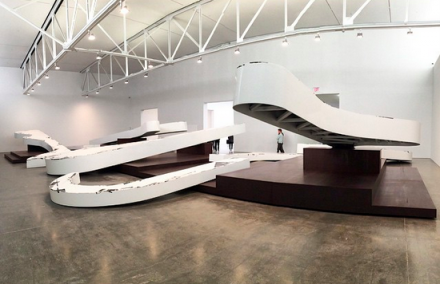
Michael Heizer, Altars, via Art Observed
In Gagosian Gallery’s 24th Street Outpost, lithe, twisting steel platforms sprawl across the floor, smooth lines that undulate across the faded, industrial steppes that they lay across. In another room, an immense boulder hangs suspended from the ceiling, displayed in a case cut between two walls of the gallery so that viewers can see the rock’s sides from two separate rooms. The show could only be the work of Michael Heizer, one of the founding voices of American land art, whose new work continues his pioneering investigations into the construction of space and time along abstract, self-realized formats.
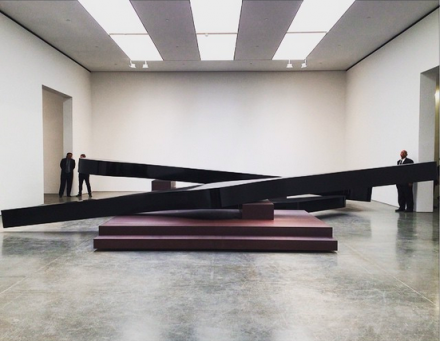
Michael Heizer, Altar 3 (2015), via Art Observed
Heizer’s work has received impressive attention in recent years, particularly after his immense Levitated Mass installation at LACMA caused classic L.A. gridlock during its transport, and brought visitors flocking to the museum to pass under the daunting boulder installed outside the museum. Heizer seems to have made good on his spotlight, and has executed a new series of works that continue his explorations of the viewer’s relationship to movement and space, always bounded by natural and industrial elements.
The exhibition prominently features works that challenge the hierarchies of space that often define the gallery experience. Massive rocks stand balanced where walls previously existed, while nearby, a small piece of diorite is framed by steel, a coy tip of the hat to the traditional hung painting. But Heizer’s master-strokes here are his immense Altar works, steel sculptures that fill the gallery’s already impressively cavernous rooms with loping, smooth lines and digital prints across surfaces that offer a role as suspended artifacts, forms lost somewhere in the exchange of time, or rather, seeking to replicate a sense of timelessness immediately.
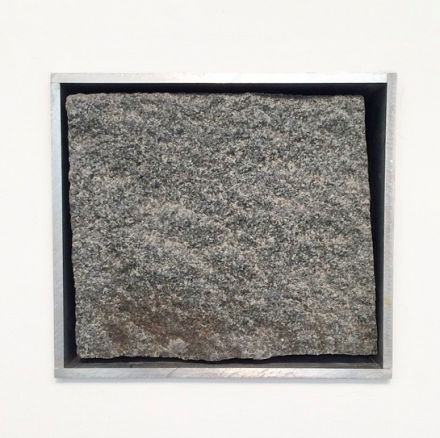
Michael Heizer, Blue Diorite (1981), via Art Observed
But the most intriguing notion of Heizer’s newest works is their function on multiple planes of sight and experience. The cryptic, quasi-hieroglyphic wall pieces that accompany the works seem to be the closest thing to a map that one is provided, a series of sometimes jagged, sometimes fluid lines that seem to trace the artist’s shapes as if viewed from above. But given their relation, as an abstract that can only provide a cursory understanding of one’s relation to these pieces, perhaps “text” is a more apt descriptor.
What Heizer initiates through the exhibition is a language for the vast, a series of analogs that function along a spectrum of phenomenological space. One can never see the full expanse of the works in total, nor can they appreciate their tactile qualities in full by passing around them casually. Only through an extended relation, one that is bounded and furthered by time and movement, can offer an appreciation of the artist’s work here. Much like his uncompleted City, the works on view in New York are pieces meant to be experienced, not “in full,” but as an extended relationship, one that only exists as the viewer remains a viewer.
Heizer’s work is on view through July 2nd.
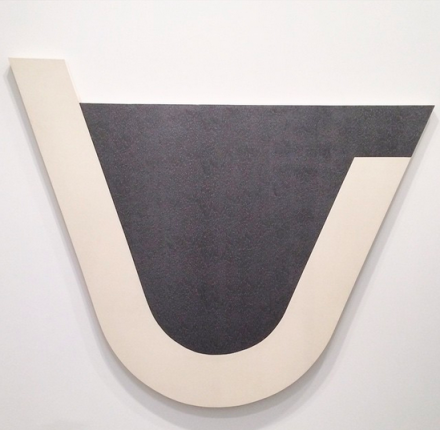
Michael Heizer, U Painting (1975), via Art Observed
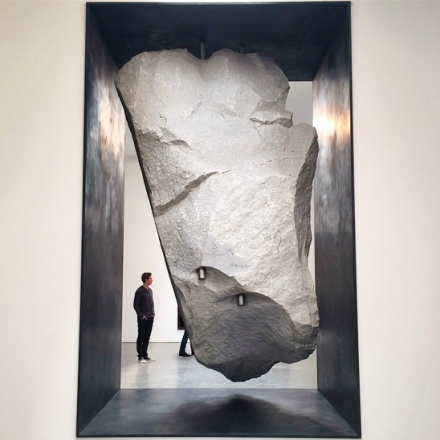
Michael Heizer, Potato Chip (2015), via Art Observed
— D. Creahan
Read more:
Michael Heizer at Gagosian [Gagosian Gallery]
Artist Michael Heizer, in the Nevada desert for 43 years, returns to New York City [Washington Post]
Michael Heizer: ‘I’m a quiet man. I just make art’ [The Guardian]



